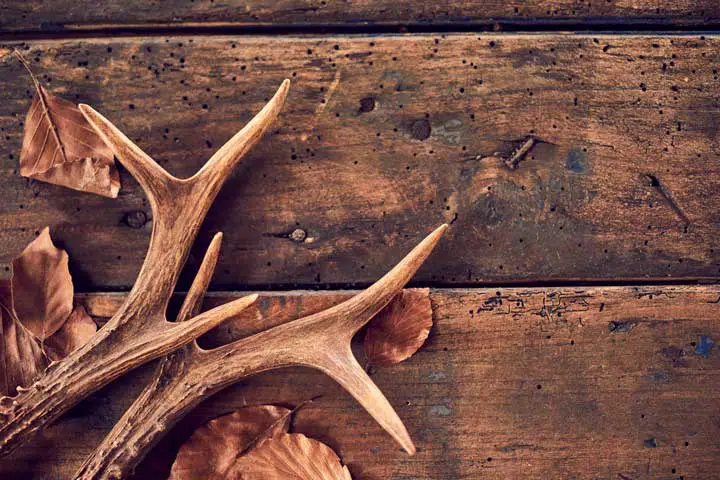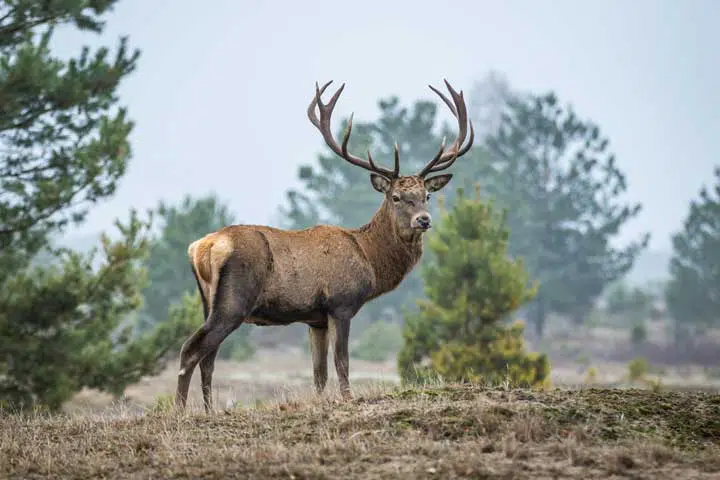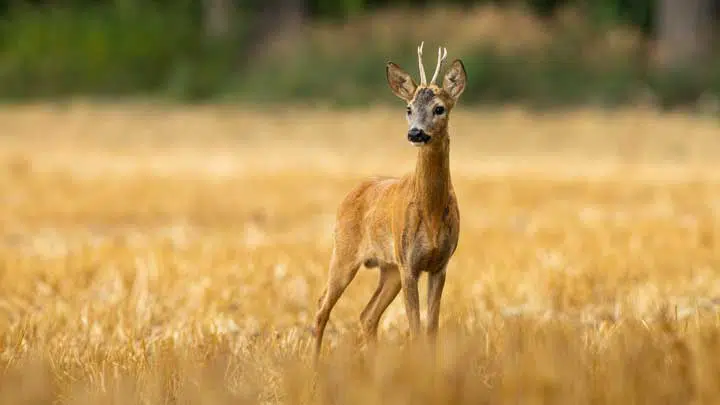A deer’s antlers are one of the most magnificent wonders of nature. From different sizes, shapes, and colorations, these beautiful creations can be sourced naturally in the wilderness.
Antlers are unique; no two antlers are the same. Finding antlers is an exciting experience and can bring you closer to the natural beauty of wildlife, but when do deer shed their antlers?
To know the best time to search for deer antlers, you’ll have to know a few things about a deer’s growth cycle.

Deer Antler Growth Process
Deer begin antler re-growth in the spring, antlers fall off in the winter, and then the cycle continues the following year.
March-April
In late March, whitetail deer begin antler growth. This growth continues into April. Growth is minimal during this period. Deer require sunlight for healthy antler growth, and the sun is not at its fullest during this time. Whitetail deer are still recovering from the long winter at this time, so they do not have the strength built up quite yet. A fully mature buck should see between one to two inches of antler beam on the brow tines.
May
This is the time of year when food is in abundance, and antler growth requires continuous protein and other essential nutrients. The body condition improves, and rapid growth of the antlers begins. Near the end of May, the antler beams should be approximately half of what they would be at full growth, and the second points are now noticeable.
June
Water is in abundance, and natural food is everywhere to provide for these beautiful creatures. June is known for the longest daylight, which aids in hormonal health and antler growth. By the end of June, all points are visible on the rack.
July
Antlers are very healthy in July. By late July, antlers should be visibly enormous and are fully formed. Now, the hardening process begins.
August
Northern bucks have full antler growth by early August, diminishing blood flow to the antlers. This stage is known as the hardening process. Velvet covers the antlers, shrinking the antlers’ visual appearance due to the lack of blood flow.
August-September
Between August and September, bucks begin to shed the velvet from their antlers.
October
Antlers do not change from here on. The growth has peaked, velvet has grown and shed, and blood flow to the antlers stops.

The Difference Between Whitetail Deer and Mule Deer
Whitetail deer live in more northern locations. Mule deer are found in southwestern states and can live from 9-11 years. Both deer are herbivores, eating plants, leaves, and twigs. All deer are active during the day; they are not nocturnal. You have to be quick to spot one, as deer can run extremely fast.
What Factors Affect Antler Growth?
Many factors can affect the growth of antlers. Some of these factors include:
- Health
- Genetics
- Age
- Stress
- Soil Quality
- Habitat
- Agriculture
Deer Antler Growth Over Years
A common rule of thumb is the bigger and older the deer, the bigger the antlers—antler growth in whitetail and mule deer peaks around five years of age.
The Life Cycle of Antlers
Deer antlers have the fastest growing tissue known to man, growing an inch or more per day. The pedicle, where the antler meets the skull, is what the antler grows from. All deer re-grow antlers each year. The growth begins in the Spring and continues through the summer months. Deer shed their antlers in early to late winter; then, the cycle continues again.

What Happens During the Hardening Process?
During the months when deer antlers harden, the capillary network and cartilage become highly vascularized, giving the antlers a strong, hard texture.
What to Look for in the Perfect Deer Antler?
There are many qualities in a deer antler to look for if you are considering looking for some this spring.
Size
A healthy buck provides a healthy rack and shows that it can defend its territory. Female deer are also attracted to large racks—the bigger the rack, the better the score. Testosterone levels and body size can affect the size of the antlers.
Color
Some deer antlers are lightly colored, while others are much darker. Antler coloring is unique and beautiful, reflecting the natural colors of seasons.
Rubbing Marks
Deer rub their antlers up against natural objects such as trees which alter the coloration of the antler and can leave unique indents and markings. Dominant bucks fight with one another, bashing antlers together. Any marking on an antler can represent an outlook of a deer’s life.
Symmetry
Many deer antler enthusiasts look for symmetry in the rack. The symmetry in the points on the antlers is a wondrous natural process.
Why Do People Want Antlers?
Antlers can be used for a variety of purposes, some of which you wouldn’t even imagine!
Ground antlers have been used for hundreds of years in Chinese medicine. Because antlers contain protein, collagen, amino acids, and fatty acids amongst many other things, the ancient Chinese believed that they improved energy, protected the body, and prolonged life.
Ground antlers are also great for cooking purposes. The gelatinous ingredient can be used in soups or homemade jellies. Some older recipes called for Hartshorn, or antlers heated in kilns, distilled, and ground. In this process, the antlers create ammonium carbonate commonly known as baking powder.
Aside from the health and culinary aspects of antlers, they can be used to craft several beautiful objects. Some use antlers to create unique decor, while others take the craft back thousands of years and craft survival knives or tools with the durable material.
Summary
From Spring through to winter, deer antlers grow and undergo an intense process. Closer to the end of fall, deer antlers begin to lose blood flow and shed their velvet covering. In late winter and early spring, deer shed their antlers and begin the growth process again. This is the perfect time to find antlers. Whitetail deer shed before mule deer, in December or January. Late winter and early spring is the best time to find some beautiful and unique antlers.
Questions and Answers
When should I look for deer antlers?
By late winter or early spring, deer are known to shed their antlers. The type of deer, their overall health, and their habitat may factor in changes to when they shed antlers.
Where should I look for shed deer antlers?
Where you find food sources, you can find deer antlers. Grainfields and food plots are great places to search for deer antlers. Look for places where deer have bedded in groups. Grass and fields will have patted-down sections where large groups of deer gather and feed. You may also want to look at where you spread deer attractant. Crop fields are a good food source for deer, and antlers are known to be found there too.
What months are deer antlers shed?
All deer shed their antlers in early to late winter, just before re-growth starts again in early Spring.
Does the size of deer antlers change each year?
Depending on many factors, deer antlers can either get bigger or smaller each year. If conditions are healthy and food, water, and sunlight are in abundance, deer may grow bigger antlers the following year. If deer are malnourished and under stress, the antlers may not have the proper nutrients to grow big and strong.
Do whitetail deer shed their antlers at different times?
Whitetail deer are known to shed in December or January when there is snow on the ground. All whitetail deer shed their antlers around the same time and begin re-growth at the same time.
Do mule deer shed their antlers at different times?
Mule deer are found in the Southwestern United States and tend to shed their antlers later than the whitetail deer, from February to April.




